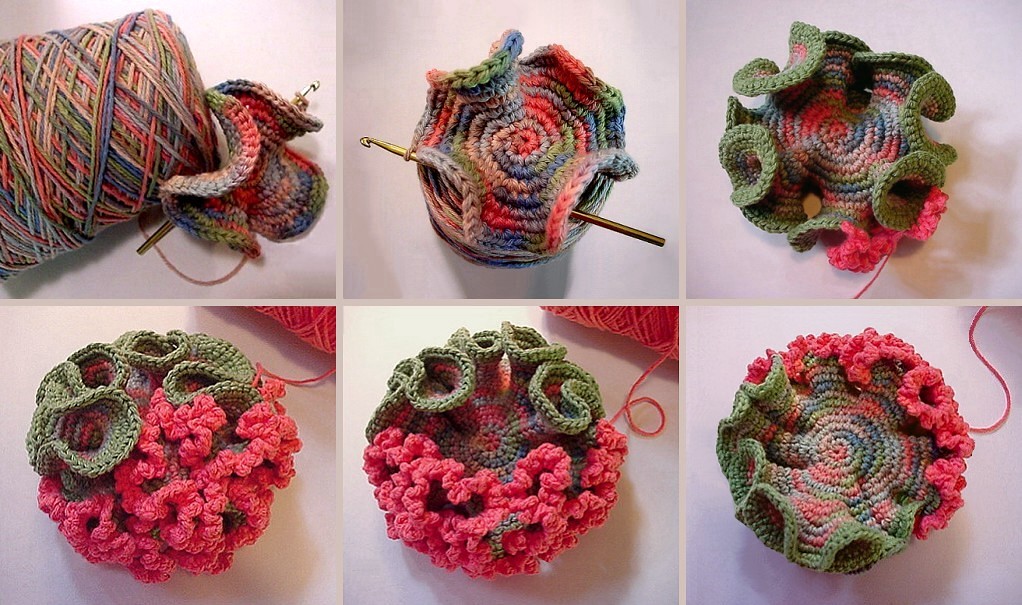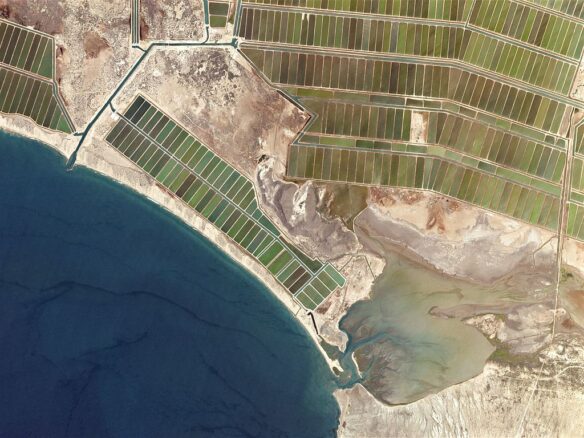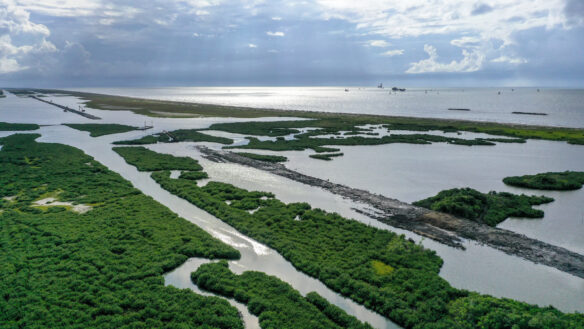The Crochet Coral Reef Keeps Spawning, Hyperbolically – the New York Times
Excerpt:
The long-running project, sometimes described as the environmental version of the AIDS quilt, thrives on convoluted math and a sea of volunteers.
For Further Exploration:
EXHIBITIONS:
Schlossmuseum, Linz, Austria
from 04-10-2023 through 02-04-2024
Crocheted seas and other abstractions – a collaborative project by CHRISTINE & MARGARET WERTHEIM and the Institute For Figuring inspired by mathematics and climate change
Carnegie Museum of Art, Pittsburgh, PA – USA
from 11-04-2023 through 01-26-2025
Pittsburgh Satellite Reef – Part of the worldwide Crochet Coral Reef Project by Christine and Margaret Wertheim and the Institute For Figuring
TED (04-20-2009):
Margaret Wertheim: The beautiful math of coral (and crochet)
Science writer Margaret Wertheim re-creates the creatures of the coral reefs using a technique invented by a mathematician — simultaneously celebrating the amazements of the reef and deep-diving into the hyperbolic underpinnings of coral creation….
Inside Edition (02-03-2022):
Coral Reef Made of Yarn Brings Awareness to Climate Change
ADDITIONAL READING . . .
How to Crochet a Coral Reef – and Why – Scientific American

Excerpt:
When words aren’t enough to get people engaged in an environmental issue, it can be useful to try another medium
It’s hard to get people’s attention focused on the environment. Blame it on diminishing attention spans, overwhelming amounts of information, or simply the fact that people grow weary of hearing the same problems discussed to death.
The failing health of coral reefs might fall into this last category—a very real problem with the same sad story year after year. But no matter how many times a scientist talks about the perils of reefs around the world, some of the same problems never seem to go away.
In 2005, Los Angeles-based twin sisters, Margaret and Christine Wertheim tried a different approach to communications by starting the Crochet Coral Reef project. The idea was born from their love of the Great Barrier Reef, their oceanic neighbor, and their appreciation for handiwork and the community it can create, simply by participation. Margaret, with a background in physics, math and science communication, and Christine, a professor of experimental writing and feminism, created a revolutionary art program to engage the public in coral reef science…
The crocheted corals display hyperbolic geometry, a type of geometry that is neither planar nor spherical; Picture hyperbolic geometry as a sort of saddle shape with curves and dips. Nature loves hyperbolic geometry and you can see examples of it in the sea (sea slugs and corals) or in your salad bowl (curly kale leaves). As it turns out, crochet is a perfect medium for creating rippled, ruffled edges seen in corals.
People are invited to contribute to the Crochet Coral Reef project through workshops. At the workshops, participants crochet corals, adding their creations to the touring art instillation. In that approachable environment they end up being treated to scientific discussions of mathematics, marine biology, global warming and environmental conservation.
So far, the workshops have welcomed more than 8,000 people, most of whom are women, on five continents. And after 10 years, the Wertheim sisters still get requests from people to participate in workshops. “As a science communicator, and I’ve been one for 35 years, I’ve never seen any science communication that’s had this kind of grassroots engagement, ever,” said Margaret…
ALSO OF INTEREST . . .
Women Mind the Water (10-16-2022):
Margaret Wertheim – Women Mind the Water Artivist Series
ArtLike (09-27-2019):
Crochet Coral Reef – Venice Art Biennale 2019









